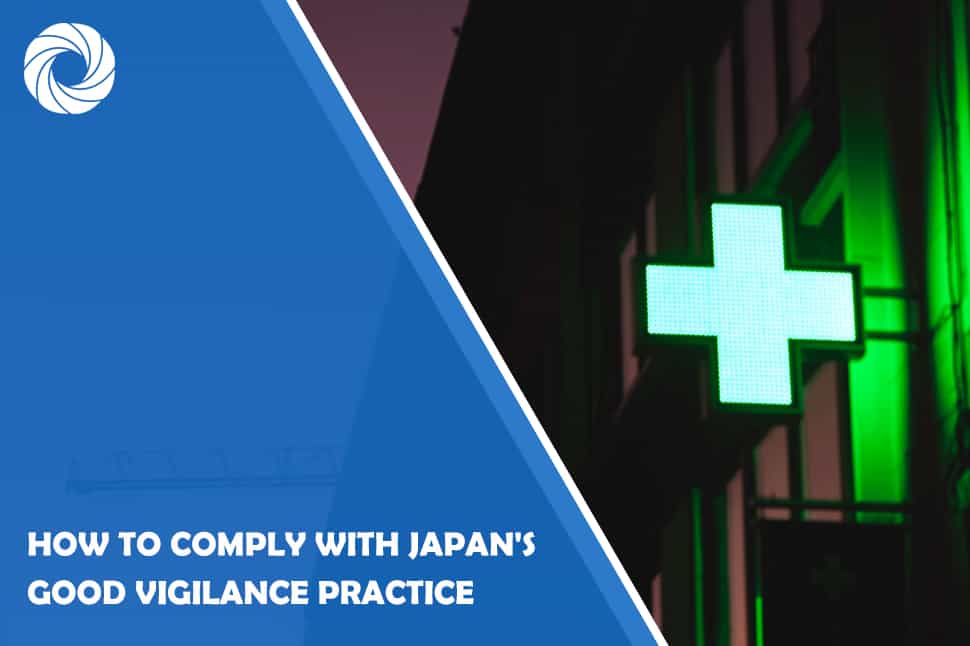The global pharmaceutical industry operates under stringent regulations, and Japan is no exception. Navigating Japan's Good Vigilance Practice (GVP) is an essential step in ensuring the safe and effective distribution of medical products in the country. Adherence to these standards is paramount for maintaining drug quality assurance in Japan and fostering a trust-based relationship with consumers.

Grasping the GVP Framework
Japan's GVP, similar to other international standards, focuses on post-market surveillance of pharmaceuticals. This model aims to swiftly identify and address adverse drug reactions (ADRs) that might emerge once the drugs reach the consumer market. Moreover, the emphasis is on the continuous monitoring of drugs' safety profiles, thus underscoring its relevance for international businesses dealing in pharmaceuticals.
The GVP standards embody two significant nuances that set them apart. The first is the risk management plan (RMP), a comprehensive document outlining the steps a business will take to monitor and mitigate identified risks and potential unidentified risks associated with a drug. The second is the use of medical representatives, who play a crucial role in reporting ADRs, rendering their training paramount to GVP compliance.
Meeting Regulatory Requirements
A working knowledge of Japan's regulatory landscape is necessary for businesses intending to operate within its borders. One of the critical steps involves passing the Japan GMP drug audit, which ensures the manufacturing process's integrity and compliance with local pharmaceutical regulations in Japan.
Once familiar with these regulatory stipulations, businesses can align their operations accordingly. For instance, meeting GVP requirements includes the accurate and prompt reporting of ADRs, maintaining detailed records of such incidents, and putting in place robust mechanisms to identify and manage risks associated with the drugs.
Preparing for GVP compliance is not an overnight task. It necessitates a thorough understanding of the regulatory environment, implementing changes in current processes, and ensuring that these changes are communicated effectively across the organization.
The Importance of Trained Personnel
Given the vital role of personnel in adhering to GVP standards, businesses must invest in effective training programs. They should aim to cultivate an understanding of Japan's GVP among employees, particularly those directly involved in pharmaceutical safety, such as medical representatives.
Moreover, an effective training program extends beyond the onboarding process. To ensure the constant update of GVP-related knowledge, continued professional development programs are
invaluable. They help keep staff informed about changes in the regulatory environment, thereby facilitating ongoing compliance.
Robust Surveillance Mechanisms
In order to establish an effective surveillance system that complies with Good Vigilance Practices (GVP), several key factors must be considered. Firstly, it is crucial to recognize that adverse drug reactions (ADRs) can occur at any stage of a drug's lifecycle.
Therefore, continuous monitoring is essential to promptly identify and address any safety concerns, ensuring the well-being of consumers and safeguarding the reputation of the pharmaceutical brand.
Developing a robust surveillance system requires a comprehensive strategy that encompasses various aspects. One vital aspect is the establishment of efficient processes for the collection and analysis of data related to ADRs. Businesses need to have streamlined procedures in place to ensure timely detection, accurate documentation, and appropriate reporting of ADRs.
However, creating a surveillance system is not a one-time task; it requires regular monitoring and updates. As regulations evolve and drug profiles change, the surveillance methodologies must adapt accordingly. By staying up to date with the latest regulatory requirements and scientific advancements, businesses can ensure that their surveillance system remains relevant and effective in identifying and mitigating potential risks associated with their products.
Key Considerations for Compliance
When considering GVP compliance, businesses should take into account several important considerations:
- Patient Data Privacy – Handling sensitive patient data requires a strong focus on privacy and data protection. Businesses must implement robust security measures to prevent unauthorized access or breaches of patient information during the reporting process.
- Risk-benefit Analysis – Conducting thorough risk-benefit analyses is crucial to assess the overall balance of a drug's advantages and potential risks. This analysis helps businesses make informed decisions regarding the safety and effectiveness of their products.
- Reliable Reporting Procedures – Accurate reporting is a fundamental requirement for GVP compliance. Businesses need to establish efficient reporting procedures that align with the specified guidelines. Reports should be timely, complete, and provide all the necessary information to facilitate effective monitoring and action.
- Alignment with Global Pharmacovigilance Standards – While regulatory requirements may vary across countries, businesses should aim to align their operations with global pharmacovigilance standards. This alignment enables smoother international operations and ensures a consistent approach to drug safety and surveillance worldwide.
By considering these additional factors and incorporating them into their GVP compliance efforts, businesses can enhance patient data protection, make well-informed decisions about risk and benefit, ensure accurate reporting, and align their operations with global best practices.
These considerations contribute to maintaining a robust and effective surveillance system that upholds the safety of consumers and the integrity of the pharmaceutical brand.
Compliance with Japan's GVP is a complex process that requires a thorough understanding of the regulatory environment, strategic personnel training, and the implementation of effective surveillance and reporting systems. With these in place, businesses can maintain Japan drug quality assurance, protect consumer safety, and secure their position in Japan's pharmaceutical market.
